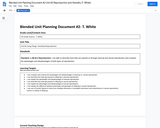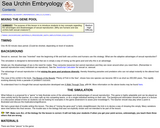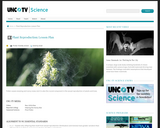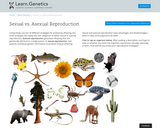
This parent guide supports parents in helping their child at home with the 7th grade Science content.
- Subject:
- Science
- Material Type:
- Reference Material
- Vocabulary
- Author:
- Kelly Rawlston
- Letoria Lewis
- Date Added:
- 10/11/2022

This parent guide supports parents in helping their child at home with the 7th grade Science content.

This resource accompanies our Rethink 7th Grade Science course. It includes ideas for use, ways to support exceptional children, ways to extend learning, digital resources and tools, tips for supporting English Language Learners and students with visual and hearing impairments. There are also ideas for offline learning.

This interactive animation shows the user the process of meiosis and the changes a cell undergoes at each stage of cell division. The resource does allow one to view meiosis as a continuous sequence or stop at any stage and review critical events taking place during each stage.

This brief video segment explores the question of sexual versus asexual reproduction through a discussion of a parthnogenic species of salamander.

This online resource provides basic information through comparison and contrast of asexual and sexual reproduction.

Students build a family of styrofoam animals to model basic principles of inheritance.

In this lesson plan from the Utah Education Network, students will use pictures of organisms and their offspring to compare inheritance between offspring of sexual and asexual reproduction. The lesson includes pictures and a student sheet.

In this lesson, students work in pairs to compare five aspects of an organism that reproduces sexually with one that reproduces asexually. As a class, students share their comparisons and generate a list of general characteristics for each mode of reproduction, and discuss the advantages and disadvantages of both.

Standard: L.HE.M.2 Reproduction: I am able to describe how traits are passed on through asexual and sexual reproduction and compare the advantages and disadvantages of both types of reproduction.

This resource supports English language development for English Language Learners. Students will study genetics and sexual v. asexual reproduction in this SIOP based lesson. The resource includes instructions, a pacing guide, slides, vocabulary cards, and student activities.

In this interactive learning object, students will work side-by-side with a virtual instructor to review the basics of microscopy and perform a guided practice experiment, practice using the microscope at their own pace, and complete an assignment from their virtual instructor successfully to receive a certificate.

In this activity, students conduct a simulation to illustrate the advantages and disadvantages of sexual reproduction.

This resource explains the difference in asexual and sexual reproduction and allows students to practice sorting this knowledge.

With this resource, students will read information about how organisms reporduce and then answer a short quiz.

In this lesson, students compare and contrast the processes of sexual reproduction and asexual reproduction by examining plant reproduction.

This brief video excerpt, from Evolution: "Why Sex?", biologist Robert Vrijenhoek discusses the Red Queen hypothesis through the example of the Mexican Poeciliid fish. Vrijenhoek has been studying the Mexican Poeciliid fish for more than 30 years. Some species of Poeciliopsis reproduce sexually while others reproduce asexually. Vrijenhoek found that the genetic diversity produced by sexual reproduction allowed the sexual fish to survive a parasite more successfully than the asexual fish. Invoking the Red Queen hypothesis, Vrijenhoek suggests the sexual populations are able to keep up or adapt to new selective challenges, while the asexual populations, essentially clonal, are not. Supplemental resources, including a background essay and discussion questions, are also provided.

This course was created by the Rethink Education Content Development Team. This course is aligned to the NC Standards for 7th Grade Science.

This course was created by the Rethink Education Content Development Team. This course is aligned to the NC Standards for 7th Grade Science.

This course was created by the Rethink Education Content Development Team. This course is aligned to the NC Standards for 7th Grade Science.

Students have the opportunity to click on and read about various organisms and finally hypothesize if the organsim uses sexual or asexual reproduction. After briefly explaining sexual and asexual reproduction, this interactive resource allows users to explore different organisms.